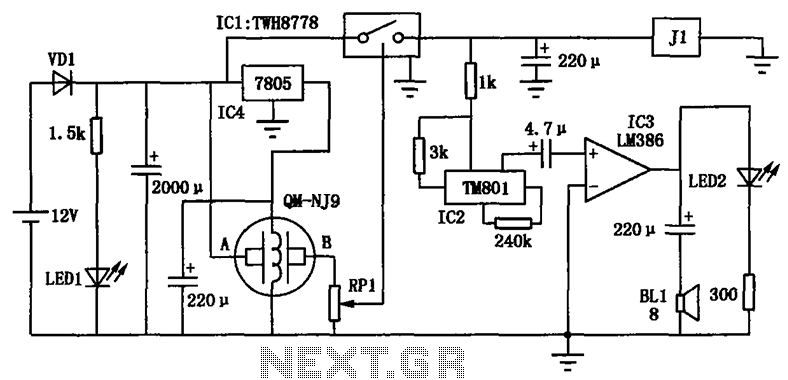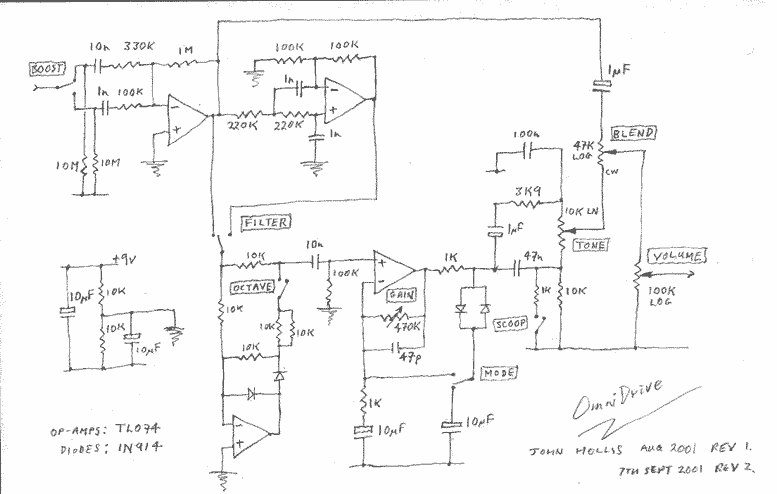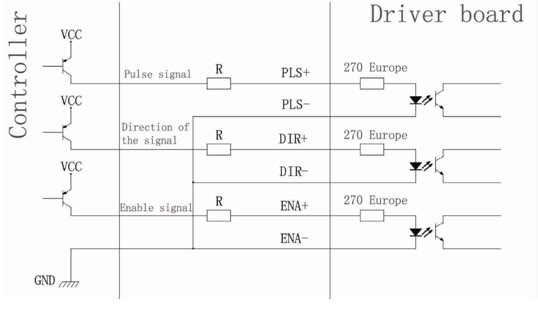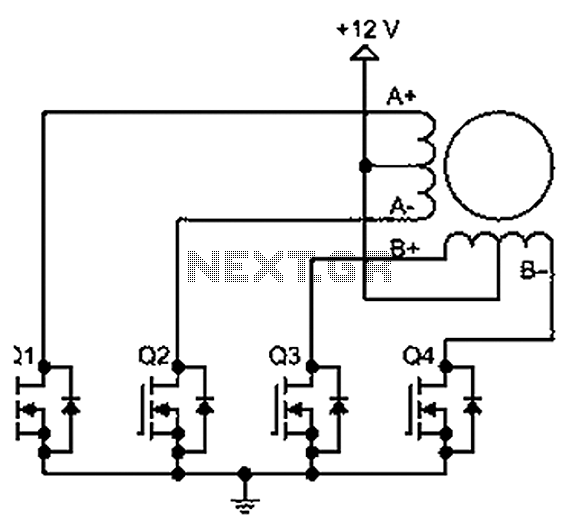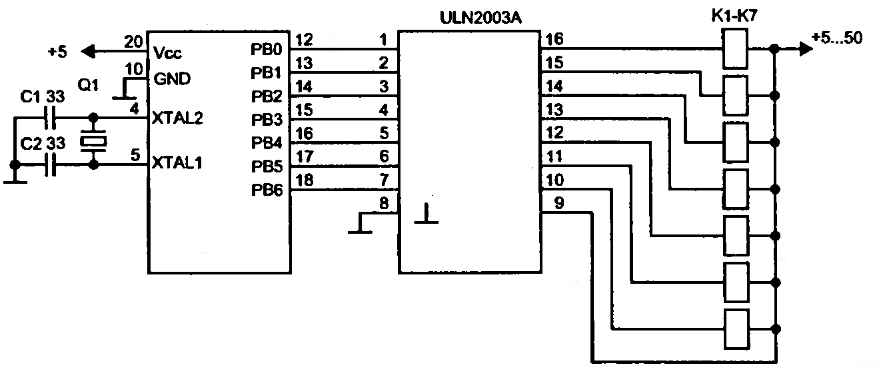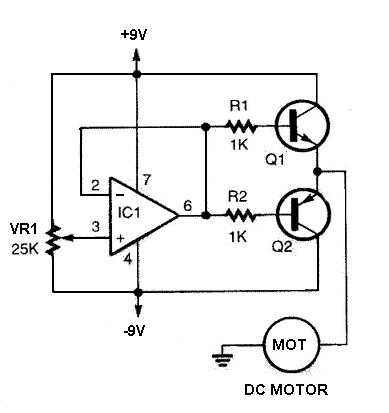
LM629PWM drive
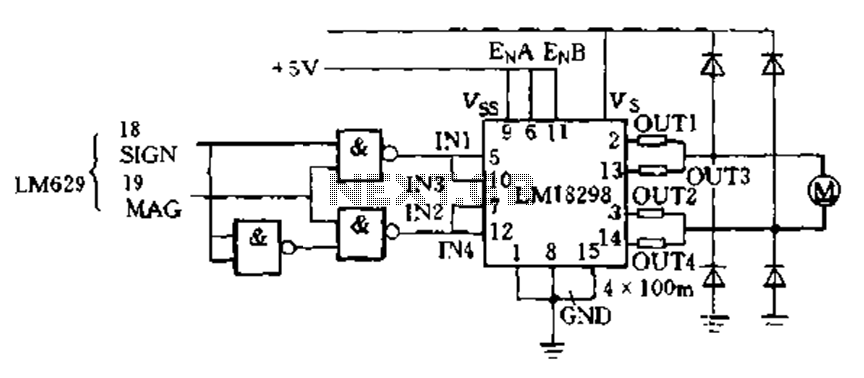
The LM629 PWM outputs directly drive the LM18298 dual H-bridge circuit, which functions as a switching amplifier. This configuration employs two H-bridges in parallel to control small DC servo motors. Additionally, the LM629 can be utilized for motion control in brushless DC motor applications, such as with the LM621 integrated circuit.
The LM629 is a versatile PWM controller designed for efficient motor control applications. Its ability to generate precise pulse-width modulation signals allows it to effectively manage the operation of the LM18298 dual H-bridge circuit. The LM18298 is specifically designed to drive small DC servo motors, providing high efficiency and robust performance through its dual H-bridge configuration. This configuration enables the simultaneous control of two motors or the ability to drive a single motor with enhanced power handling capabilities.
In applications requiring brushless DC motors, the LM629 can be paired with the LM621 integrated circuit, which is optimized for brushless motor drive. This combination allows for sophisticated motion control strategies, such as speed regulation and position control, by modulating the power delivered to the motor based on feedback from sensors. The LM621 incorporates features that simplify the implementation of complex control algorithms, making it suitable for applications in robotics, automation, and other precision motion systems.
Overall, the integration of the LM629 and LM18298, along with the LM621 for brushless motors, provides a comprehensive solution for driving various types of motors with high efficiency and precision, catering to a wide range of industrial and consumer applications.Expressed LM629 PWM outputs directly drive LM18298 dual H -bridge circuit conditions. The latter is a switching amplifier, two H-bridge in parallel to drive a small DC servo mo tors. LM629 can also be used for brushless DC motor drive motion control. For example, the use of brushless DC motor LM621 integrated circuit can be realized.
The LM629 is a versatile PWM controller designed for efficient motor control applications. Its ability to generate precise pulse-width modulation signals allows it to effectively manage the operation of the LM18298 dual H-bridge circuit. The LM18298 is specifically designed to drive small DC servo motors, providing high efficiency and robust performance through its dual H-bridge configuration. This configuration enables the simultaneous control of two motors or the ability to drive a single motor with enhanced power handling capabilities.
In applications requiring brushless DC motors, the LM629 can be paired with the LM621 integrated circuit, which is optimized for brushless motor drive. This combination allows for sophisticated motion control strategies, such as speed regulation and position control, by modulating the power delivered to the motor based on feedback from sensors. The LM621 incorporates features that simplify the implementation of complex control algorithms, making it suitable for applications in robotics, automation, and other precision motion systems.
Overall, the integration of the LM629 and LM18298, along with the LM621 for brushless motors, provides a comprehensive solution for driving various types of motors with high efficiency and precision, catering to a wide range of industrial and consumer applications.Expressed LM629 PWM outputs directly drive LM18298 dual H -bridge circuit conditions. The latter is a switching amplifier, two H-bridge in parallel to drive a small DC servo mo tors. LM629 can also be used for brushless DC motor drive motion control. For example, the use of brushless DC motor LM621 integrated circuit can be realized.
